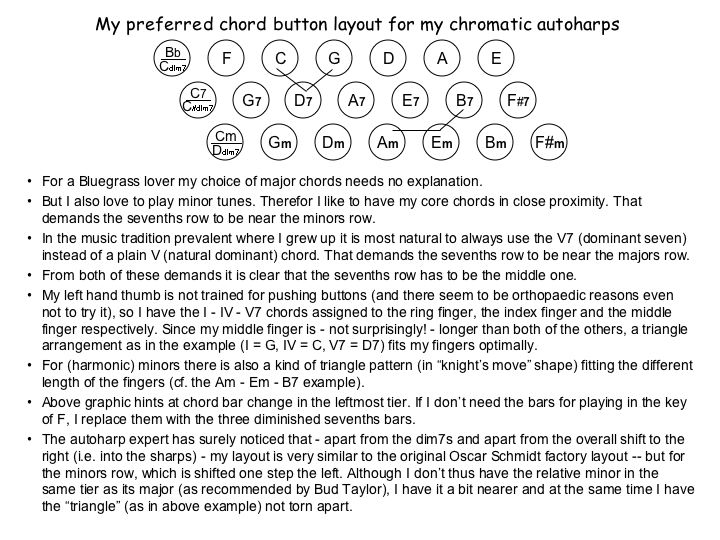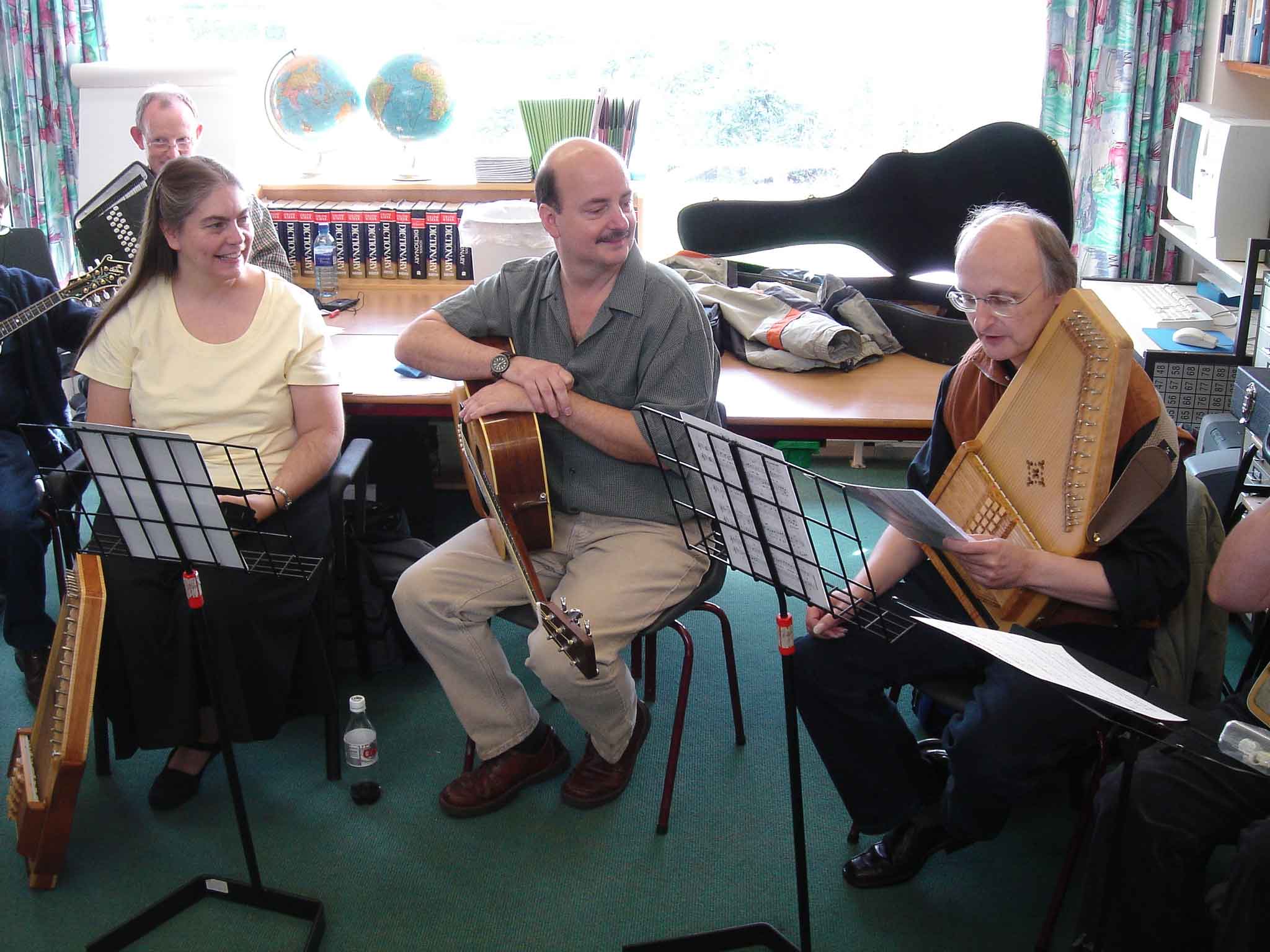The current "string schedule" (39 strings) on my chromatic "Cascade" d'Aigle 'harp
(from bass to treble, left to right; note that I'm using enharmonic equivalents [e.g. a# instead of bb], perfectly legal with equal temperament tuning):
a
This gives me 3 fully chromatic octaves of the D scale (with only the lowest d# missing); the bar "|" is marking the octave borders. Note that I do NOT have a low g and a low f (as are normally on an OS factory autoharp).
On my ZephyrHill 'harp I have the same string schedule with the exception of the lowest 2 notes; it starts with the low c string.
(But the ZephyrHill's chord bar layout is exactly the same as that of the d'Aigle, see below.)
Every choice of chords for an autoharp and every chord bar layout is necessarily a compromise within the confines of 21 chords in 3 rows and certainly always a sub-optimal solution to the problem of having to select beforehand a limited number of predefined chords, hoping to anticipate needed support for all the tunes one wants to be able to play eventually, ideally also appropriate to be played with other musicians in certain genre settings. This is my kind of compromise, at present fitting my needs adequately:

Here you can do what Heidi and John are doing, have a look at my ZephyrHill 'harp (Mark Fackeldey's #90) (picture taken in England by Neal Walters, October 2005):

Home